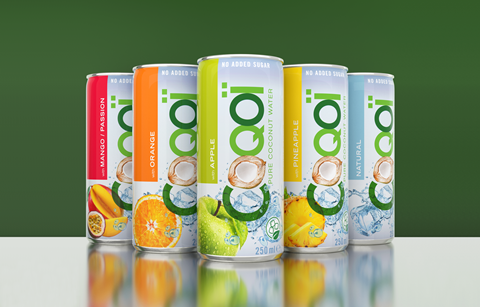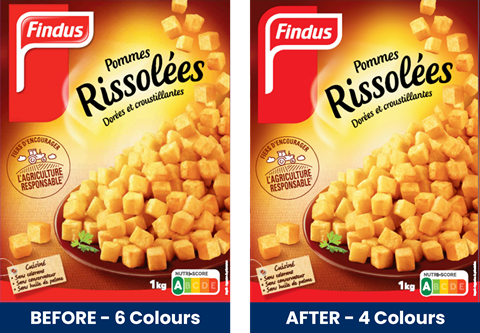In an industry that is becoming ever-more demanding with increasingly complex regulations, how can using the principles of Industry 4.0 and digitalization help brands to manage their packaging workflows and project the right brand image, while also meeting their mandatory requirements?
The importance of digital management when it comes to packaging workflows is something that Miller Graphics, a leading provider of graphic packaging services, is very keen to impress upon the many brand owners it already serves across a wide range of industry sectors.
We will shortly go into more detail about the company’s suite of services and how this enables its clients to address the specific packaging workflow challenges they face through the principles of Industry 4.0, but more generally, we start by asking a simple question: Why exactly are digital packaging workflows so essential to brands today?
“Digital management of print workflows is essential because it increases efficiency by automating processes, minimizing waste, enhancing quality and consistency, and reducing the risk of data breaches,” says Group President Philippe Bataillie. “It also allows for better collaboration and faster time-to-market, which are crucial in today’s competitive marketplace.”
The benefits of a cloud-based solution
To this end, in 2020 Miller introduced the 100% cloud-based Atom software suite, which it says aligns with the principles of Industry 4.0, leveraging automation, real-time data, and digital integration with existing systems (ERP/PIM). The platform, says the company, is intended for brand owners to fully control their packaging project management from design to print.
“Atom is designed for packaging professionals, by packaging and print professionals,” says Karin Hoga, Group Marketing & International Sales Director. “It is a modular solution tailored to meet FMCG industry needs. It enables packaging professionals to manage the entire lifecycle of their packaging projects and deliver compliant, consistent and print-ready packaging in no time.
“The software is also designed to scale with the brand’s needs, making it suitable for both small enterprises and large multinational corporations.”

Briefly, Atom comprises three key components:
1. Atom Millnet is an integrated digital packaging workflow platform that enables users to automate processes for ‘fast collaboration, transparency, productivity, quality and connectivity’, providing control over the entire packaging project management with real-time data, enabling faster decision-making, online approval and online review which, ultimately, says Miller Graphics, shortens the time-to-market.
2. Content Management is one of Millnet’s optional modules. Crafted to produce high-impact packaging that complies with GS1 standards from the start, it acts as an MDM (Master Data Management) solution. Integrated with existing systems (ERP/PIM/DAM), packaging and label templates are automatically filled with accurate product information like regulatory text, bar codes, EAN codes, and product details. Bulk updates replace manual changes on each artwork.
Streamlined management of product information: real-time generation of PDF packaging files and instant approval of amendments.
Management of the different languages featured on packaging: generating multilingual artworks in a few clicks.
3. Artwork Online is designed to allow brands to create packaging artwork efficiently and securely from personalized templates (Artwork Automation). Through this method, says Miller, texts, colours, graphic elements, images and barcodes can all be amended quickly and accurately, to ensure consistency.

Major printing challenges for brand owners – and how to address them
Brand owners will be more than cognizant of the challenges and bottlenecks they face when managing their workflows – whether these are related to efficiency, cost management or waste management. For Miller, the task is always to both identify these and look at practical solutions. For example:
Challenge: Too many redesigns: The regulatory landscape is changing fast – the new PPWR measures to reduce packaging waste being just one example of this. According to Fanny François, Sales & Marketing coordinator, regulatory and packaging standards changes account for 30% of packaging redesigns. This can include raw material requirements or complying with ‘anti-greenwashing’ packaging laws. Each redesign of course comes with its own challenges, including handling large amounts of complex data and working to strict deadlines.
Solution: Fanny tells us that, “Digitalizing the packaging process enables brand owners to keep pace with the fast-moving industry by equipping their staff with reliable tools. This approach not only provides a competitive edge in recruitment but also helps reduce employee turnover, retain talent, and lower recruitment costs.”
Challenge: Time-consuming content management: As Fanny explains, “Branding & Packaging Project Managers navigate the complexities of managing various brands, SKUs, regulations, translations, and more. When a redesign is needed, they must manually update each packaging artwork affected by the change, either themselves or via a design agency. This places significant stress on a small number of staff who bear full responsibility for ensuring the accuracy of the packaging data.
“Furthermore, working with external agencies can introduce discrepancies, as graphic designers may lack the necessary space, knowledge of the company, or the ability to make the most appropriate decisions. Consequently, this lack of control can lead to compliance issues at the end of the process and, in worst cases, cause product recalls.”

Solution: Digitalization enables packaging data control: through this, complex and dispersed data can be centralized to allow automatic updates to packaging, 3D packshots and product sheets. This, according to Miller Graphics, makes it possible for all data and processes to be kept in-house, reducing reliance on third parties and significantly cutting the risk of inconsistencies or compliance issues.
Challenge: Environmental impact: This is arguably the biggest concern for us all, given the environmental crisis we collectively face. How does a brand reduce the overall impact of their packaging processes and minimize errors to cut waste?
Solution: According to Fanny, digitalizing the packaging process can lower a brand’s environmental impact in several ways. To begin with, there is the carbon footprint: “Fewer emails mean less data being transmitted and stored on servers, which in turn lowers the energy consumption and carbon footprint associated with email storage and management. Through cloud-based access, teams can also collaborate remotely without needing to travel for meetings or approvals.”
Secondly, there is the reduction of paper waste. Digital proofing negates the need to ship physical proofs, cutting down on paper waste and further transport costs. Furthermore, all documents and artwork can be stored digitally, cutting down on paper use.
Finally, there are the significant environmental savings that any brand can make from reducing printing errors. “Tools like Atom,” says Fanny, “provide accurate version tracking, reducing the risk of printing errors and subsequent waste from reprints. This ensures that only the correct version of packaging artwork is produced, minimizing material waste.”

Final advice for brand owners
All the above should give any brand owners reading a clear overview of the benefits of adopting digital workflow solutions, in line with the principles of Industry 4.0. But to end on a practical note, we asked Fanny: What is the most important advice she would give to a brand looking for help in improving the overall efficiency of their packaging print processes across the board? Here, put succinctly, are the four key points she suggests they should consider:
-
Customization: Choose a system that can be tailored to your specific needs. Customization to your existing workflows ensures faster and effortless user adoption.
-
Integration: Opt for a system that integrates with your existing tools, so the new system complements your current processes rather than disrupting them. This includes compatibility with software like ERP and PIM, that your team already uses, enabling a smooth flow of data and information across different departments.
-
Automation: Implement systems that automate repetitive tasks. This saves time, reduces the risk of errors, and allows teams to focus on more valuable activities while enjoying a seamless working environment.
-
Trust: Work with partners who have established expertise in packaging printing. Their insights can be invaluable and help ensure high-quality outcomes.
“By following these steps,” she concludes, “brands can greatly enhance their packaging workflow efficiency, allowing them to concentrate on other strategic areas of their business.”
Get in contact with Miller Graphics today and find out how Atom can help you put all these principles into action.
Customer case study: Findus reduces colours on packaging
Aside from Atom, another key solution offered by Miller Graphics is print management. A recent project in this regard, with client Findus France (Nomad Foods Group), demonstrates how this can be applied successfully in the food industry to increase efficiency and reduce costs and environmental impact – all without compromising on quality or brand image.
Findus made the decision to reduce the number of colours in its packaging printing from 6 to 4, and in doing so, according to Miller Graphics, was able to achieve substantial gains. But how does such an apparently simple change make such an impact?
“Despite reducing the number of colours for packaging printing, the strategy provided by Miller Graphics to Findus does not harm the marketing impact in any way. It is the colour mix that has been reinterpreted. It is a success for Findus because, on top of reducing costs, it facilitates, stabilizes and speeds up their packaging production.”

Karin explains that some of the key benefits to brands of colour reduction include:
-
Cost-control: First and foremost, it’s important to point out that managing print through reducing the number of colours offers significant financial savings.
-
Brand consistency: Printers can experience less deviation at the four-colour level than at the Pantone level, as density drops during printing are much less common with four-colour.
-
Environmental savings: Reducing the number of colours limits the number of inks and chemicals needed, minimizing waste.
-
Shorter time-to-market: “Reducing the number of colours allows for rationalized production: less preparation time, always reloading four groups with the same shades on the same machines. Everything runs smoothly, increasing printing speed.”
Professionals in the FMCG sector looking to find out more about how they can optimize their own processes can find out more about this project here.

This premium feature brings a completely new way for you to interact with our audience through a combination of collaborative editorial and premium promotion. An article written together between you and Packaging Europe’s content team, The Wider View will have a dedicated widget across all web pages & eNewsletter, and will link to a stunning, long-format web page put together by our design team featuring your graphics and branding. Carrying no other advertising, and pushing the limits of ordinary web communications, this is the ultimate digital content package.


















No comments yet